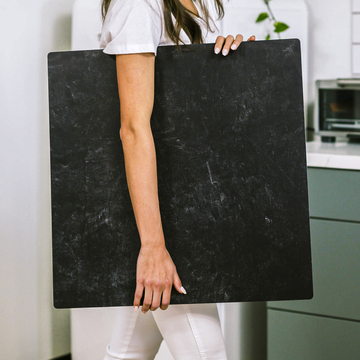If you’ve ever scrolled through social media and found yourself stopping cold at a jaw-dropping food photo, you might think it’s all perfect lighting and great styling. But there’s an unsung hero in every standout shot: the photography backdrop. Most people see just the surface, but those in the know understand that the real magic goes far deeper-into the science of materials, texture, and even physics.
What if you could transform your food photography by thinking about your backdrops differently? Today, let's uncover the surprising factors that separate amateur setups from professional-quality images-straight from the playbooks of product photographers and creators who obsess over every detail.
Look Beyond the Obvious: The Power of Micro-Texture
The first thing most of us notice about a surface is its color or pattern. But if you really want to elevate your photography, pay close attention to the micro-texture-the tiny, often invisible bumps and grooves that dictate how light plays across your scene.
- Soft, Natural Lighting: Surfaces with subtle, matte texture scatter light in every direction. The result? Smooth gradients, gentle highlights, and a look that feels effortlessly natural regardless of your setup.
- Dramatic or Glossy Effects: Ultra-smooth or reflective backdrops bounce light directly, making highlights more pronounced and reflections sharper. Sometimes that’s perfect for a certain effect-but it can also create unwanted glare or distracting hotspots.
- Pro tip: Try angling your light to see how different backdrops handle it. You’ll quickly spot the nuanced differences that micro-texture brings to the table.
Why the Material Itself Matters
Don’t get fooled by pretty pictures alone. The material that your backdrop is made from can be just as important as the print or color. It affects how your food looks, how easy the shoot is, and how much time you’ll spend editing.
- Authentic Color Reproduction: Low-quality, colored surfaces can reflect their tint onto your food. Suddenly, your coconut macaroons might pick up a greenish hue, or a blue backdrop washes out the warmth in your bread. Professional-grade backdrops are engineered to be neutral, so your food stays true-to-life.
- Consistency Across Lights: Materials like foam, wood, or plastic behave differently when illuminated. The best backdrops have specially chosen bases and finishes that work predictably under any lighting condition-meaning fewer surprises for you when switching between natural and artificial light.
- Test for Yourself: Place a gray card or white plate on your backdrop and snap a quick shot. If the colors shift, your surface might be adding unwanted tones.
Hidden Helpers: How Surfaces Shape Food Styling
Here’s something hardly anyone talks about: how the feel of your backdrop changes the way you style your shots. The friction between surface and subject isn’t just for kitchen science nerds-it affects everyone holding a camera.
- A cookie placed on a glossy tile might glide across the surface at the slightest touch, while a textured, matte backdrop helps it stay put.
- When you drizzle syrup or honey, certain textures help liquids bead up attractively, creating mouthwatering pools instead of flat, uninspiring blobs.
- Matte finishes also make it easier to “stage” those perfect crumbs, preventing them from slipping or rolling away every time you adjust your composition.
Controlling Light: Glare, Polarization & Realism
Ever get weird glares or rainbow streaks in your images, even when your backdrop is labeled "matte"? Some surfaces polarize or reflect light unevenly, creating distracting shine that’s almost impossible to fix in editing. Professionally engineered backdrops use advanced coatings to scatter light smoothly, keeping texture looking natural and colors balanced from every angle.
Durability: The Lifespan Factor
Let's not forget practicality. Food photography is messy: think sauces, crumbs, melting ice. Cheap paper warps and stains, and untreated wood quickly absorbs moisture. Durable, coated surfaces like Replica Surfaces are easy to clean, resist warping and staining, and keep delivering professional results shoot after shoot.
How to Choose: A Quick Scientist’s Checklist
To sum it up, ask these questions next time you select a backdrop:
- How does it scatter and soften light?
- Is the color neutral and true-even under mixed lighting?
- Will the surface make styling easy-or create more challenges?
- Is it tough enough to handle real messes?
When you treat your backdrop as both a design choice and a scientific tool, you gain a serious edge-both creatively and practically.
Ready to Level Up?
Don’t let your backdrop be an afterthought. Invest a little time in understanding how surface science impacts every shot, and you’ll see your food photography evolve overnight. For more tips and real-world comparisons of popular surfaces-including advanced options like Replica Surfaces-stay tuned for our upcoming guides.
Your best food photos? They really do start from the ground up.


